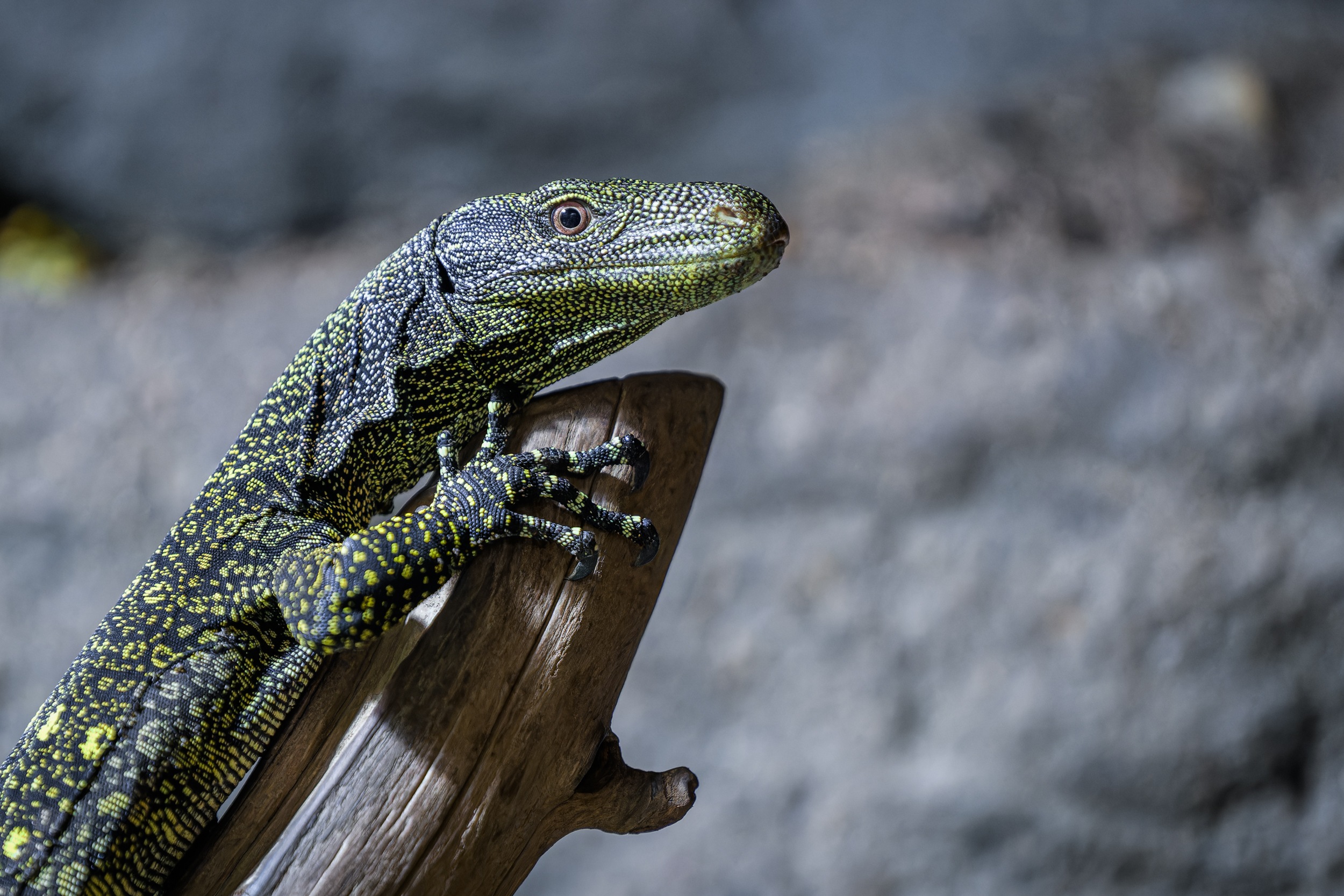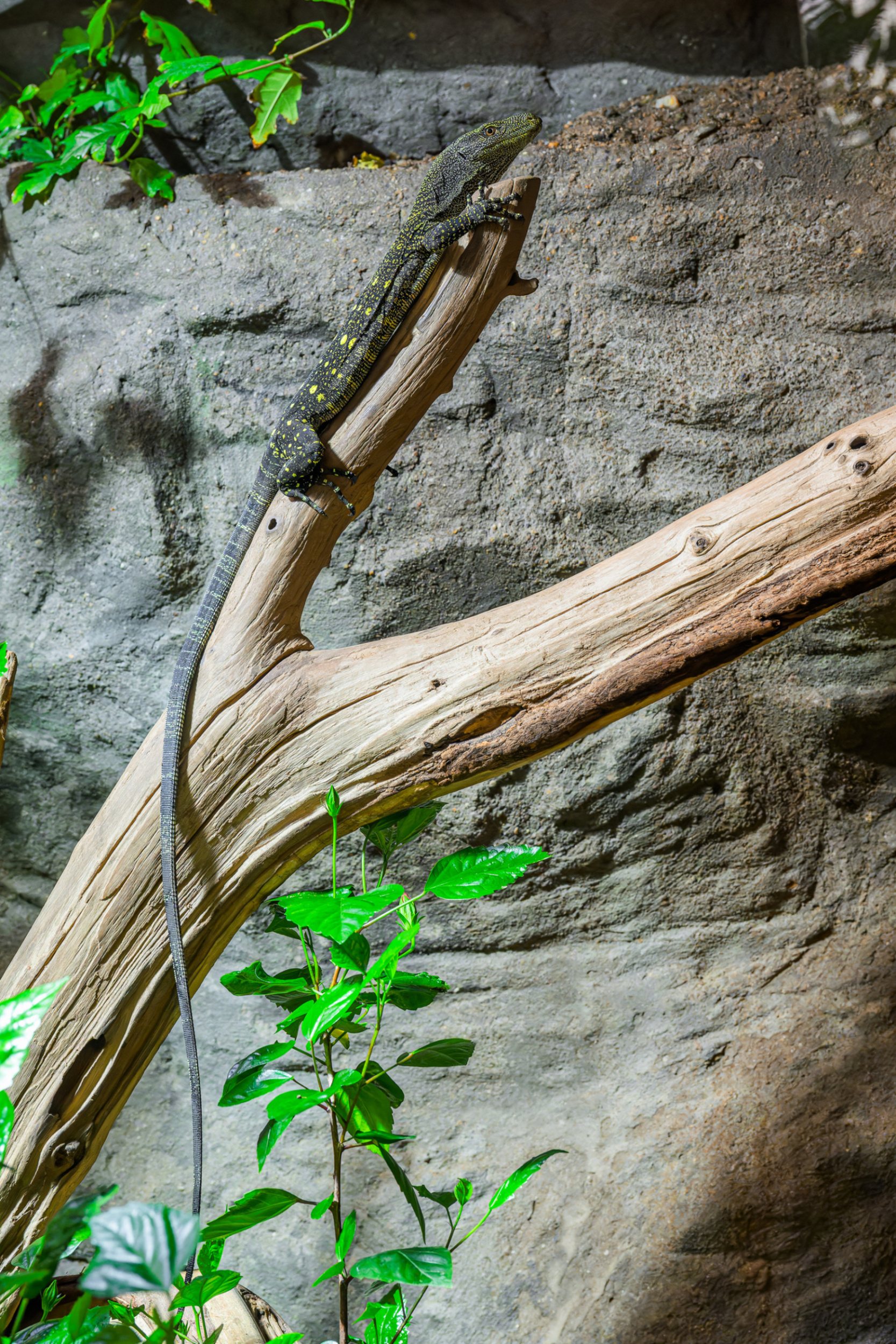Crocodile Monitors Inhabit Prague Zoo
07. 04. 2025
Crocodile monitors (Varanus salvadorii) can now be seen at Prague Zoo. The young pair, named Salva and Dorian, have made their home in the Giant Tortoise Pavilion, which until recently was inhabited by adolescent Komodo dragons. This means that after 17 years the giant terrarium has returned to its original purpose and has been transformed into a dense, green New Guinea forest. This reptile species, considered to be the longest lizard on the planet, is active during the day so visitors can watch the new monitor lizards whenever the zoo is open.

The crocodile monitor instils respect, not least because of its massive head and strong jaws, set with long teeth. Their slender bodies are decorated with a distinctive black and yellow pattern. Photo Petr Hamerník, Prague Zoo
Petr Velenský, Prague Zoo's curator of reptiles, said, “It is often said that Crocodile monitors are the world's longest lizards. As concerns length, they sometimes exceed that of Komodo dragons, however, these slender arboreal lizards, with their very long tails, are far less massive. It has been said there was a specimen at 470 cm, though this has yet to be reliably documented, so, until then, we will just have to be satisfied with the more modest, though equally impressive 250 centimetres.”

Crocodile monitors spend most of their lives in the tree canopies, where they move with surprising agility. Photo Petr Hamerník, Prague Zoo
The year-old tree-living giants arrived from Fuengirola, Spain, but their overall journey was far longer. Re-establishing a breeding programme at Prague Zoo is part of the European Association of Zoos and Aquariums Reptile Taxon Advisory Group’s (RTAG EAZA) plan to build a viable European population of the species. With this goal in mind, Prague Zoo and Bioparc Fuengirola were joined by the zoos in Marwell, England, and Düsseldorf, Germany, to organise the transport of nine juveniles from Henry Doorly Zoo in Omaha, USA. The young monitor lizards were quarantined in Spain and during March they were transported to their final destinations.
As Velenský explained, “Crocodile monitors are more common in American zoos than in European ones. The arrival of these juveniles from the United States is a welcome and important boost to the genetics of local specimens kept in captivity.”

Crocodile monitors lie in wait among the branches and seize their prey with a quick lunge. They mainly hunt smaller mammals and birds but have been known to eat carrion and bird eggs. Photo Petr Hamerník, Prague Zoo
Although not considered an endangered species, the crocodile monitor faces threats from rainforest destruction and plantation expansion in New Guinea. Hunting for meat and the illegal trade in animals are other risk factors. The species is still quite rare in zoos, and therefore, being able to observe it in captivity will give a better understanding of its biology and ecology and, hence, its conservation needs.

The crocodile monitor’s most distinctive attribute is probably its very long tail. Photo Petr Hamerník, Prague Zoo








